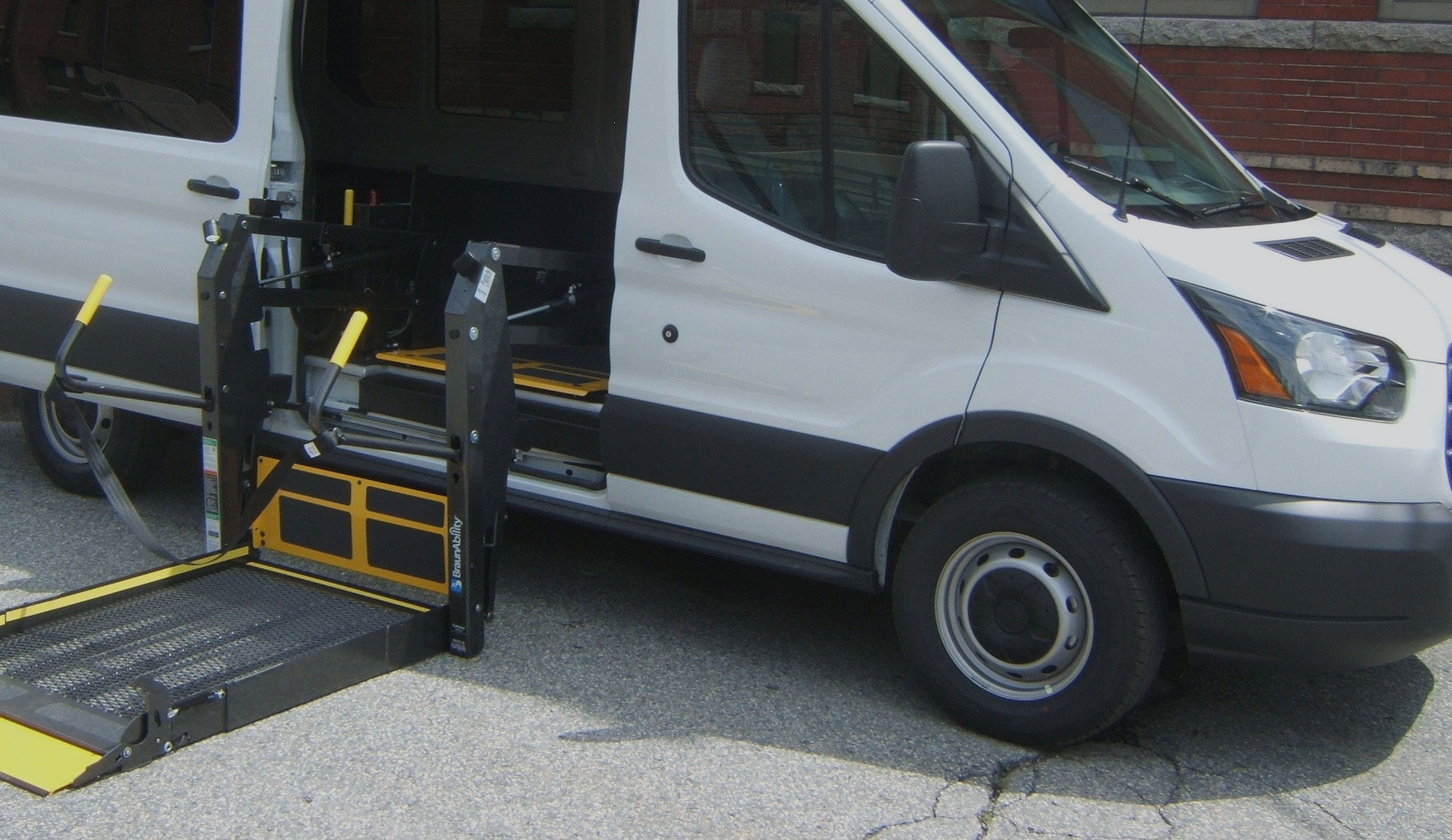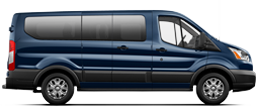 2019 FORD TRANSIT
2019 FORD TRANSIT
VANS THAT ARE BUILT FOR
THE OPEN ROAD—AND BEYOND.
QUESTIONS CALL:
1-800-952-2248
FORD TRANSIT VANS ARE DESIGNED TO TAKE YOU FURTHER.
Safety, versatility and ample cargo space are just a few of the reasons vans are an excellent choice to upfit with adaptive equipment. And Ford offers two beautifully designed models that feature the latest advancements in comfort and technology. Review your options here, and then discuss them with your Ford Dealer.
APPROVED VEHICLES:
 2019 FORD TRANSIT CONNECT
2019 FORD TRANSIT CONNECT
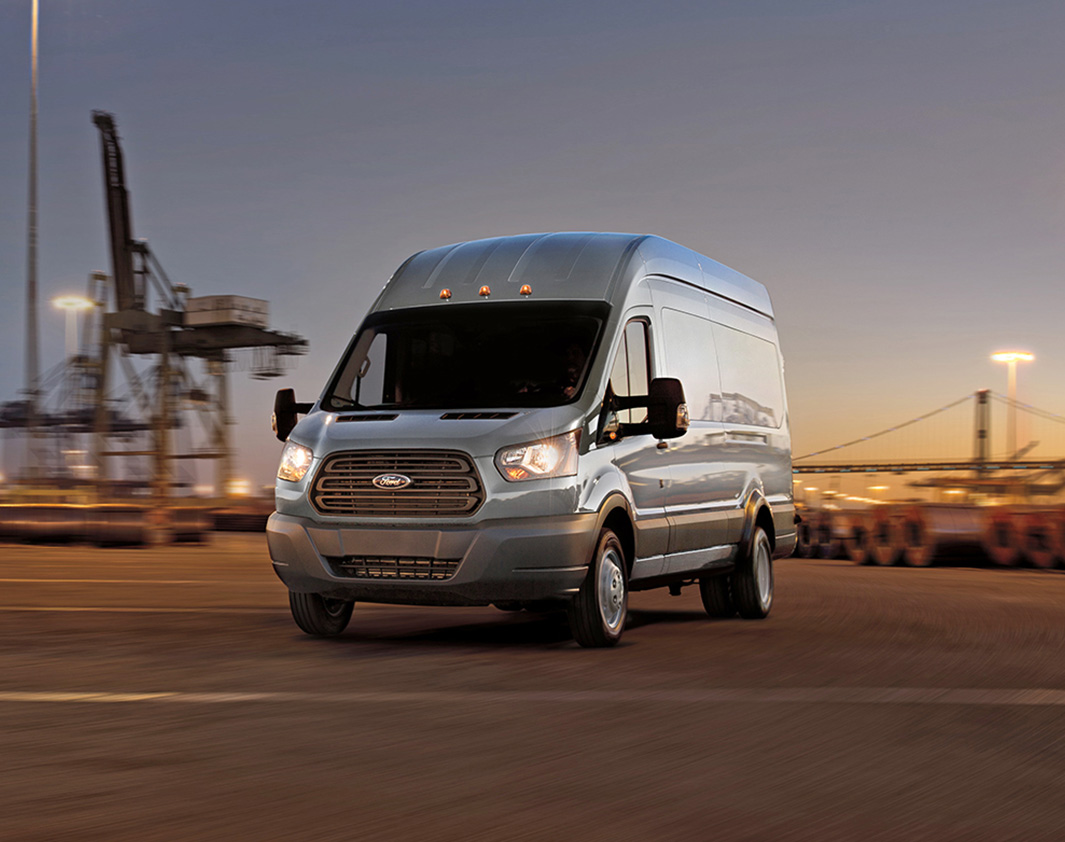

The 2019 Ford Transit is the winner of the Edmunds Best Retained Value® Award for the van segment.
ADAPTIVE EQUIPMENT
- CARRIERS
- HAND CONTROLS
- HOIST LIFTS
- PARKING BRAKES
- POWER ASSIST SEATS
- RAMPS
- STEERING DEVICES
- WHEELCHAIR RESTRAINTS
CARRIERS
Ford Transit Vans can be equipped with two types of carriers-each designed for ease of operation and convenience:
- Bumper-Mounted Carrier: This smart design allows manual wheelchairs and scooters to be mounted on a bumper.
- Hitch-Mounted Carrier: This easy-to-use carrier tilts down when loading the wheelchair or scooter and then tilts up and locks into place.
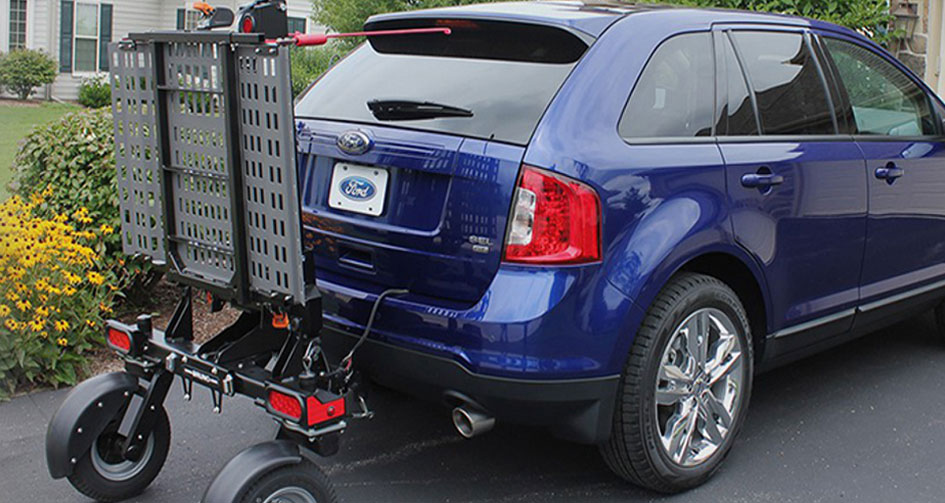
Easy to load and unload, the carriers available for Ford vehicles are perfect for people on the go.
HAND CONTROLS
A number of technologically advanced electronic hand controls are available to enhance the operation of the Ford Transit model you select, including:
- Push Pull Control: Slows the vehicle when pushed toward the floor and accelerates the vehicle when pulled toward the driver.
- Push Right Angle Pull Hand Control: Slows the vehicle when pushed toward the instrument panel and accelerates the vehicle when pulled downward at a right angle.
- Push Twist Control: Accelerates the vehicle when twisted and slows the vehicle when pushed toward the floor.
- Quad Hand Controls: Consists of an extra L-shaped bracket attached to the hand controls.
- Push/Rotary Control (mechanical): Slows the vehicle when pushed forward and accelerates the vehicle when rotated backward.

Electronic hand controls set your Ford in motion-with you in the driver's seat.
HOIST LIFTS
The Ford Transit can be equipped with a choice of two lift styles, while the Ford Transit Connect can accommodate one lift option. Each type of lift is designed for easy operation and long-term durability.
Hoist lifts are available for both the Ford Transit and the Ford Transit Connect.
- Vehicle Top Lift: An electric motor-driven hoist operates by switches. A steel pin lowers to pick up a manual wheelchair, which folds as it rises.
- Cargo Area Lift: An electric motor-driven swing arm hoist that operates by a pendant will lift a scooter or power wheelchair into the cargo area of a van.
- Platform Lifts: There are four types
of platform lifts, all of which are available for the Transit
only.
- Platform Lifts: This lift is stored either in the side, the rear, or under the floor of a van. The lift requires two doors or a sliding door on the side of a van. The platforms have expanded metal in the upper half of the platform for better visibility when the lift is folded and the van is being driven.
- Interior Storage Lift: Designed to lift scooters and power wheelchairs into the cargo area of vans, this lift allows the equipment to be rolled onto the platform and stored inside the vehicle. The equipment user must be able to transfer.
- Rotary (Swing) Lift: This lift option offers greater parking convenience due to less room needed to enter and exit the van. The Rotary Lift device swings into the van and the lift platform sits on the floor-in the middle of the van. The wheelchair/scooter user is lifted into the vehicle along with the wheelchair/scooter.
- Under-the-Floor Lift: This type of lift is stored under the van and may require modifications to the exhaust system, gas tank, etc.
Should you have questions or need further information, please contact a Ford-authorized Qualified Vehicle Modifier (QVM), or call the Ford Accessibility Program Custom Care Center at 1-800-952-2248.
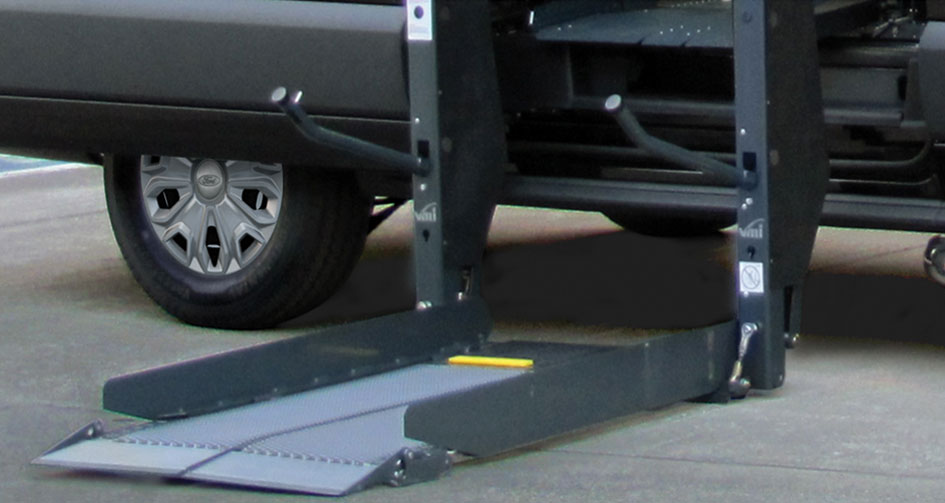
Leave the heavy lifting to us-with a premium quality lift that's ideal for your Ford vehicle.
PARKING BRAKES
Choose from two ingenious devices that make it easier to activate the vehicle's parking brake:
- Electric Parking Brake: This is a motorized brake that can be set and released by a switch located within easy reach of the driver.
- Manual Parking Brake: This device features a handle attached to the parking brake that is long enough to operate by hand.

Simply brilliant! Activating your Ford's parking brake doesn't get easier than this.
POWER ASSIST SEATS
Getting behind the wheel is easy with the choice of three innovative systems that provide convenient entrance into a Ford Transit or Ford Transit Connect:
- Rotating and Lift Seat: This system is ideal for vehicles such as trucks that are set higher off the ground. The seat rotates, comes out of the vehicle and lowers toward the ground-eliminating the difficulty normally associated with entering a vehicle with high ground clearance.
- Rotating Seat: Developed for vehicles that are lower to the ground, this system provides easy access to an automotive seat. The seat rotates out and over the doorsill, bridging the gap for a safe transfer onto the seat. Once you're on, the seat rotates back into the vehicle. A manual version of this device is also available.
- Under-Floor Lift Seat: This under-floor power transfer seat helps a person get in and out of a van without any modifications to the cab. The "Stow-Away™" discreetly hides under the van in a sealed, rugged drawer. A button is pressed and the drawer opens and stops to the correct transfer height. Once on the seat, the occupant presses the same button and the seat continues elevating to the cab.
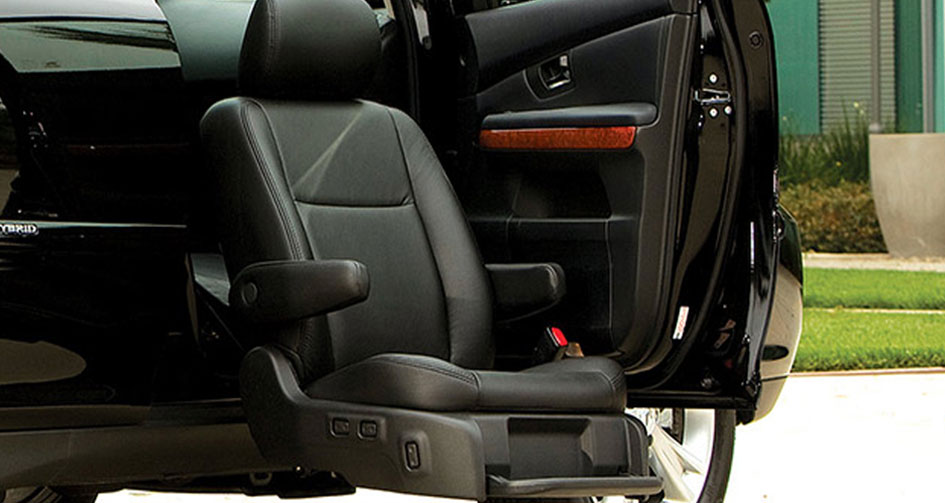
Get in and out of your Ford with power-assisted convenience.
RAMPS
The 2019 Ford Transit Connect is available with a selection of four ramps-which allow vehicle entry while a person is using a wheelchair. This conversion requires a structural modification including lowering the vehicle floor. With this type of conversion, the modification must be made by a Ford QVM modifier for eligibility. Generally, the floor is lowered 8 to 10 inches to accommodate a ramp and have room from floor to ceiling, allowing a person to ride in the vehicle from their wheelchair. In order to fasten the wheelchair to the floor, wheelchair restraints are required. Ramp varieties include:
- Fold-Out Ramps: A fold-out ramp enables the ramp to be deployed to the curb, allowing passengers entrance and exit to the vehicle. The ramp is folded in half and remains vertical while in closed position.
- In-Floor Ramps: This ramp is stored under the floor of the vehicle and is hidden away while the vehicle is in use.
- Manual Ramps: A manual ramp can be located either on the side or rear of the vehicle, depending on the conversion, and is operated by the wheelchair user's companion.
- Power Ramps: An automated ramp entry system allows the wheelchair user to deploy this type of ramp with the click of a key fob.
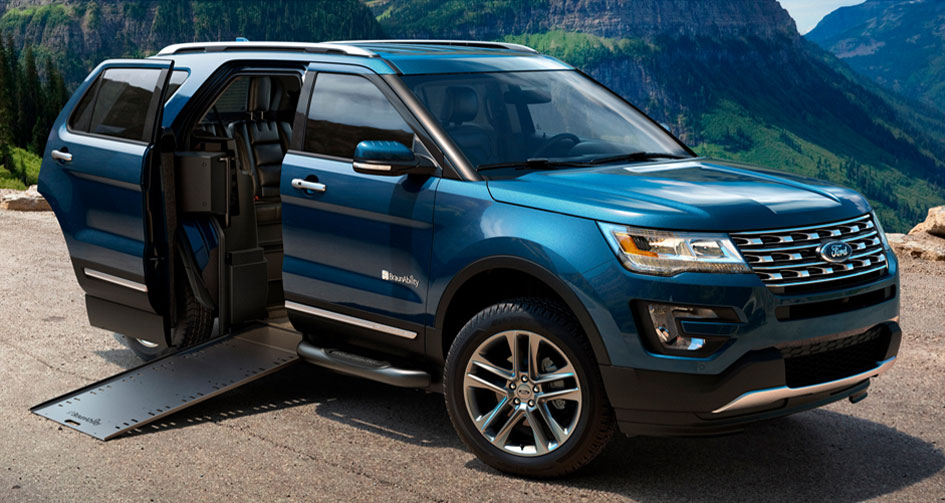
Loading or unloading wheelchairs and scooters is a breeze with an easy-to-operate ramp.
STEERING DEVICES
Engineered for those with limited arm, hand or wrist mobility, these steering devices can help drivers conveniently turn a Ford Transit or Transit Connect in every direction:
- Amputee Ring: Designed for drivers with prostheses. The hook of the prosthesis fits into the ring and remains in place while driving.
- "Para" Spinner Knob: Consists of an adjustable base and a detachable knob that can be comfortably gripped with one hand.
- Palm Grip: Ideal for a person who has control of the wrist, but is limited in grip strength. The hand is always held flat to the steering wheel while driving.
- Quad Grip with Pin: A 3/8" steel shaft from a stiff leather cuff inserts into a spinner base, with a pin attached on a horizontal or a vertical position. This device requires a stable wrist.
- (Extension): Additional Steering Devices
- Quad Steering Cuff or Splint: Consists of a wrist cock-up splint with a post attached in a vertical or horizontal position. This is ideal for persons either lacking hand and wrist function or those unable to use the above steering devices.
- Spinner Cuff: Operates as the hand is held in place by a cuff and fastened with Velcro. A lockable short rod is placed in the base of the steering wheel near the palm of the hand to allow the person to steer.
- Tri-Post or Tri-Pin Spinner Knob: Helps to stabilize and secure the hand and wrist while driving.
- V-Grip or U-Grip: Hand controls keep the hand in an upright position and in place while driving. This is used primarily by people who have adequate wrist mobility.
- Deep Dish Steering Wheel: Used by persons who have limited reach and cannot safely turn the steering wheel due to its small size.
- Foot Steering Controls: For drivers who need to maneuver the vehicle entirely with their feet.
- Horizontal Steering: The steering column is easily adjusted by motorization for those drivers with limited reach.
- Steering Column Extension: The steering column is extended by 2-6 inches, allowing room to steer for individuals driving from their wheelchairs.
- Joystick: Very similar to the joystick on a wheelchair, this larger-scaled version allows the driver to maneuver the vehicle.
- Servo Controls: Unlike the other hand controls, these operate by an auxiliary motor, rather than the pressure of an individual's hand. This reduces the amount of strength needed by the driver.
- Reduced Effort Steering: The
following options assist drivers who have limited use of their
upper extremities:
- Low Effort Steering: Reduces the effort needed to steer a vehicle by approximately 40 percent.
- Zero Effort Steering: While standard factory power steering requires approximately 40 ounces of effort to operate, this type of device reduces the effort to 6-8 ounces (no effort)-a figure that will vary with vehicle models and tire size.

A wide range of steering devices can help you take firm control of your Ford vehicle.
WHEELCHAIR RESTRAINTS
Both the Ford Transit and Ford Transit Connect are available with a selection of three systems that will secure a wheelchair in place with or without a person in it. The devices work harmoniously to ensure proper balance and safety.
- Electric Restraint System: Consists of a device on the bottom of the chair and another device on the floor of the truck. When the two devices are properly aligned, a lock will sound and the wheelchair will not move.
- Manual Restraints or Tie-Down Systems: Four straps are snugly placed around the four wheelchair wheels to help prevent rolling during vehicle movement. These systems cannot be operated from a wheelchair and require help from an attendant.
- Upper Torso Restraint: This device is used in addition to the wheelchair restraints for those with weak muscles in the upper torso area and/or poor balance.
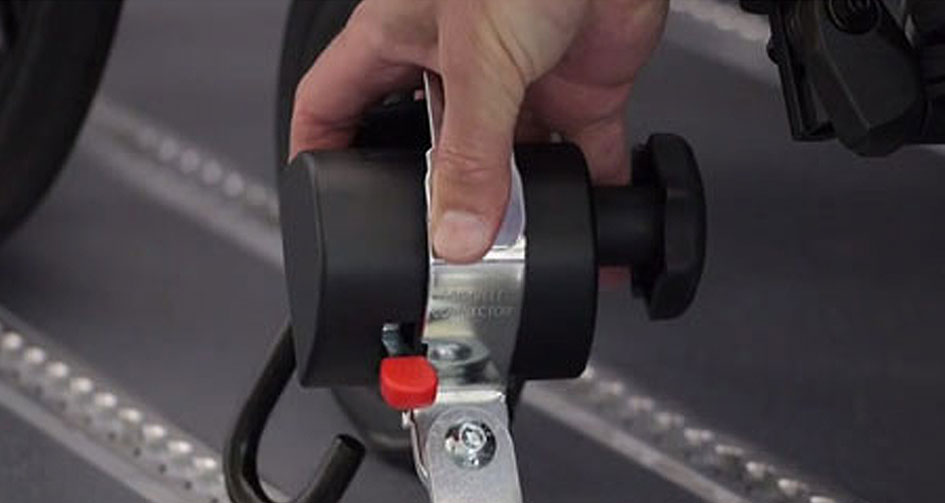
There's only one way to travel-the safe and secure away.
ADAPTIVE EQUIPMENT GALLERY








NEED HELP WITH ADAPTIVE EQUIPMENT AND/OR
Vehicle
MODIFICATION? CALL 1-800-952-2248.
Exercise your rights under the California Consumer Privacy Act here.
